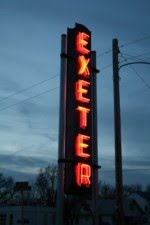by Grant Gabel, E-M Science Teacher
Velocity and distance, and how we see it in our everyday
lives, is a very important scientific concept to understand.
The freshman physical science class did an experiment
dealing with these two variables. These students will soon
enough be behind the wheel of a vehicle, so it's
imperative they know how to calculate distance and velocity.
Instead of dealing with vehicles, the class built paper
airplanes. The experiment was very simple; build three paper
airplanes that will max out in velocity, distance and time.
In order to calculate the velocity of anything in motion two
things must be known, the distance and time. Students spent
time, with a partner, brainstorming ideas on how they could
build paper airplanes that can go the fastest, farthest and
but also spend a good deal of time in flight. They were able
to make one test flight with each airplane. The experiment
was carried out in the gym to test the variables. Hunter
Stride and Kaitlyn Hertzel built an airplane with the
fastest velocity - maxing out at 13.9 meter/sec. Nolan White
and Nate Oliva won the distance variable with a throw of
14.79 m. Devin Sheffield and Toni Bossallar's airplane
spent the longest time in flight with a time of 4.92 s.
These are excellent examples of experiments that allow
students to experience first hand some of the concepts
learned in Science.
Pictured is Brooke Manning demonstrating her paper airplane
tossing technique.
Pages
- Home
- Exeter Village Ordinances - Chapter 1 Civil Admini...
- Exeter Village Ordinances: Municipal Planning
- Exeter Village Ordinances: Fire Regulations
- Exeter Village Ordinances: Public Utilities
- Exeter Village Ordninances: Public Ways and Proper...
- Exeter Village Ordinances: Business Regulations
- Exeter Village Ordinances: Vehicles and Traffic
- Exeter Village Ordinances: Misdemeanors
- Exeter Village Ordinances - Commissions and Boards...
- Stories from Exeter
- Photos from Exeter
- Exeter's Strategic Plan
- Exeter Community Guide
- Exeter Aquatic Center Rules
- Exeter Service Record Book World War I and II
VILLAGE OF EXETER
This blog is sponsored by the Village of Exeter and it is for all the past, present and future residents of Exeter. It is a place to comment on the happenings of Exeter and your place to inform the community


No comments:
Post a Comment